
Excerpt
[The Count:] At Cracow I stop at the Hotel de France. There I soon make the acquentance of the jeunesse doré of the locality, and between19 them — (a very costly one) — of Count P______, son of governor general of a province, to hoom I made cleaver story; that on way I was robed of my french passeport, that make me stop at Cracow expecting to find a french consulate in town. On ground of this story, the young count introduce me to the austrian chief of police, who give me, without any difficultys, a certificate of identity, due signed and seeled by him, that had the same value as a regular passeport for all austrian empire. I reussite also to lent [borrow] two thousand florins by the proprietor of the hotel, to wich I payd largely all my bill and my way further — to Vienna. At Vienna I had the opportunity to make another loone of two thousand florins by a old friend of my. With this lendet money I left Vienna for the south — for Buda-Pesh, the beautiful Hungarian capital, where I spendet foolish near all my money with the charming, pretty, Hungarian gerls — that brogth me bec to misery. In this critic position I rich Trieste, where I stop in the best hotel, kept by a friend of my friend in Vienna. That make me all rigth; permit me to ewayt some new chances of making money for my tramping further.
19Among.
[Benson:] The count does not explain exactly why he was all right in the best hotel, or enlarge upon the nature of the “chances” that here favoured him, or mention whether the numerous creditors he left trailing behind him as he flashed upon his brilliant course, ever Came Back into His Life — (as your creditors and mine are so lamentably likely to do). I should very much like to discuss with him his financial methods; it seems to me that he must have much that is useful to teach us all on this point — but as he is now without a penny, enquiry would perhaps seem ill-timed or tactless. But at the period of his life which this story embraces, his skill in “making money” seems to me most enviable. His world seemed always full of strangers anxious to lend him thousands on no security at all. I can only say that mine is not. I once, with great difficulty, borrowed a shilling over a strange bank counter, on the security of my simple face — but this is my nearest approach to the Count’s splendid insouciance.
Editor’s Comments
This site has been idle for the last month while I enjoyed the longest vacation of my adult life — one whole month (long vacations being one of the benefits of working in Europe). I did not, however, stop searching for and reading neglected books, so I have a backlog of posts to work through. I’m starting on it in reverse order, taking a look at the last book I came across (in Missoula’s Bird’s Nest Books), which I read in the course of my flights back home: Stella Benson’s 1933 book, Pull Devil, Pull Baker.
Finding it in the Russian history section, I pulled Pull Devil, Pull Baker down for a look on the strength of Benson’s name, which I recognized from Tobit Transplanted which D. J. Enright mentioned on several lists on this site. Although the spine only lists Benson, the title page credits her and one Count Nicolas De Toulouse Lautrec De Savine, K. M. (Knight of Malta). A quick flip through the book suggested it was a combination of recollections by the count and commentaries by Benson. It also showed that the count’s sections featured a highly unusual prose, full of misspellings and words from a hodge-podge of languages. I still wasn’t quite sure what this was, but it looked novel enough to buy for a very reasonable $5.
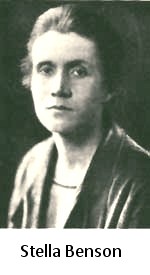 The book opens innocently. Benson vouches for the real existence of the count and offers a synopsis of his noble pedigree (quite unconnected with that of the famous painter) as a member of “one of the most distinguiched aristocratic famelys of Europe.” She describes meeting him while he was a patient in a charity hospital in Hong Kong. According to Marlene Baldwin Davis’ Notes to Benson’s diaries, Benson did, indeed, encounter:
The book opens innocently. Benson vouches for the real existence of the count and offers a synopsis of his noble pedigree (quite unconnected with that of the famous painter) as a member of “one of the most distinguiched aristocratic famelys of Europe.” She describes meeting him while he was a patient in a charity hospital in Hong Kong. According to Marlene Baldwin Davis’ Notes to Benson’s diaries, Benson did, indeed, encounter:
an elderly expatriate Russian who was penniless and ill. This relationship, which began 13 April 1931, involved Stella’s listening to the man’s ‘loving stories,’ transcribing them into readable, but not literary English so as not to spoil the effect, and getting them published under the title, Pull Devil, Pull Baker.
Benson describes with some admiration the Count’s talent for wandering the world with hardly a cent to his name, playing on the sympathy and admiration of unsuspecting Samaritans. But she also saw that his taste for adventures was being outpaced by the wear of old age:
Wait a little while — and yet a little while again. There was, I thought, the sound of a creaking bolt in the words. At seventy-seven, when a man is sick and worn out, a little while is as high a prison wall as a big while.
The Count, we learn, comes from a family with blood ties to French, Spanish, German, and Russian nobility and social links to just about anyone else of “hyg class” in Europe. Born in Russian Alaska in 1856, he survives a turbulent childhood to become a guardsman, gambler, and gallant. He easily falls in love with women, who, by his account, usually fall just as easily in love with him. He runs up enormous debts, almost always with Jews whom he looks upon with splenetic contempt. The Count’s first chapter ends with his discharge from the Russian army after a fight with a Jewish tailor over money.
Benson titles the first chapter, “Pull Devil: Presenting the Baker from the Devil’s Point of View.” According to Brewer’s, “Pull Devil, Pull Baker” is “said in encouragement of a contest, usually over the possession of something.” Benson (the Devil) sets up the book as a series of opposing chapters: one chapter giving Benson’s view of the Count (the Baker) and his stories, followed by another presenting the Count’s story, mostly in his own words with slight commentaries and footnoting by Benson. She admits at the start that,
[t]he dislocation between author and editor is usually more discreetly glossed over than it is in our book. At any rate, in our book, the Count says what he means, and I say what I mean, and, although our meanings are often mutually contradictory, at least I do not interpret him, as some editors have been known to interpret authors who are no longer sufficiently alive to insist on interpreting themselves.
My editing consists largely in trying to outshout my author with ideas of my own — ideas always, I am sure, in his opinion, completely irrelevant and frivolous.
We pass by this statement as nothing more than editorial self-effacement, but about fifty pages into the book, Benson returns to the matter in a passage that, in my view, ranks among the most remarkable to be found in any piece of fiction from the first half of the twentieth century:
For this reason I am uncertain now whether the Count de Savine is editing me or I him. I am cleverer than he is — I think — but I am not sure whether I see more or understand more. Simply, I say more and I understand that I don’t understand. He writes austerely in terms of appearances. He feels that there are various sets of words applicable to various kinds of people. Cluck, to the goose, spells hen — grunt spells pig — what else can the goose know about hens and pigs. Blu eys, gold hairs and smole fiets spell women to the Count, champagne and guardee ostentation spell hyg class men, durtiness and igrerence spells loo class men; crookyness spells Jew. That Count writes A Crooky Jew and means all that is comprehensible to him about a Jew…. What more is there to say? What other eyes can one look through, if not through one’s own? I write “The Count de Toulouse Lautrec de Savine” and add after the name thousands of words. What do I mean? I mean an invented thing — the Count-plus-me. And yet I write his name again and again and add thousands and thousands of invented words to describe him-plus-me, simply because I have not the austerity to confine myself to what I know. His narrative shows me how little I know — yet here I am, commenting industriously upon in.
It seems to me that I could edit the Jew Taylor quite as easily as I can edit the Count. I could edit an armadillo now, if I had to. I have seen and talked to the Count; I have not seen or talked to the Jew Taylor or the armadillo, but to describe Count, Jew or armadillo I have no recourse but to invent. I know nothing about the Count de Savine, either, except what he looks like and what he says and what he writes.
So I shall make up some words about the Polish Jew — and I maintain that my Jew can be no more unlikely than the real one.
Benson then proceeds to repeat the story of the Count’s fight with the tailor — only this time from the tailor’s viewpoint. The Count knocks the tailor on the head and in the commotion, the lights are snuffed. The tailor thinks, for a moment, that he has died and gone into an afterlife of nothingness. He is frightened, then comforted by the realization that all his worldly cares and burdens are now gone. Coming to, he thinks, “For a minute I was free … now I am the slave of a slave.”
With this passage, Benson leaps from the simple dimensions of a collection of fanciful reminiscences with editorial commentary to the fictional equivalent of differential geometry. Pull Devil, Pull Baker is not just “an arrangement of short stories,” as critic R. Meredith Bedell describes it. I think it shares more in common with such works as Borges’ “Pierre Menard, Author of the Quixote” and other early works of metafiction. Indeed, there are more than a few parallels between the book and Don Quixote itself: both play with the dimensions of the story as experienced and the story as told; both intersperse narration and commentary; and both deal with an elderly man from one era trying to deal with the realities of a very different one.
Perhaps without knowing it, Benson also manages to address a profound issue about the relationship between perception and reality that no less weighty a thinker than Ludwig Wittgenstein was grappling with at roughly the same time that she was writing Pull Devil, Pull Baker. “Cluck, to the goose, spells hen…. What other eyes can one look through, if not through one’s own?,” she writes. Is this not, essentially, what Wittgenstein was arguing with his aphorism, “If a lion could speak we wouldn’t understand him?”
That the Count is more likely descended from Baron Munchausen than Count Alexander IV de Toulouse Lautrec is obvious. Benson’s intrigue with the Count’s stories and viewpoint does not prevent her from exercising editorial discretion when it’s called for:
[The Count:] “Very please to meat you, Count,” tell he, “I was effrayed to molest you. You can not mean2 how inthusiast peopel are concern you, from the Blac See to the Baltic, and from there to the Pacific Costs of the Fahr East….” et., etc., etc..
2Know, imagine.
[Benson:] (Here follow nine pages of hero-worship.)
She does acknowledge that “I have grown to love the Count’s oddities of spelling,” but here again, her remarks play with our understanding of the relationship between Baker and Devil:
To make a loone suggests to me something more insouciant and dashing than the mere borrowing of money. I think the noty gerl must have possessed a piquancy that ordinary naughty girls lack. I like the ai and ay effects — so incongruously refained upon the bearded lip (bearded pen-nib?) of a world-roving adventurer; quait and quait I find much more convincing then a mere completely. And my favourite sentence in the whole of this work is —
[The Count:] The most ones of our officers had sweathearts, but I was to yang and to inconstant to bound me with a gerl; prefair to flay from one to a other, as a butterflay who flay from one flower to a other one.
“As an experiment,” Benson then “tries transposing” (an interesting choice of a mathematical term over the expected “translating”) one of the Count’s stories into grammatically and orthographically correct English: “The lawyer of the baroness appealed, on the ground that she was not in her normal mind at the time of the murder, but the appeal was dismissed by the high court.” Her point, although unstated, is clear: in these words, the story is not, in fact, one of the Count’s stories, but something different, not just if wording but in viewpoint. Yet the experiment also raises a question about the fundamental premise of the book: are these the stories as written by the Count (as claimed in the introduction) or as told by the Count and written by Benson? I have not had the opportunity to check Benson’s diaries, but if what Prof. Davis states is true (“This relationship, which began 13 April 1931, involved Stella’s listening to the man’s ‘loving stories,’ transcribing them into readable, but not literary English so as not to spoil the effect….”, then Benson’s experiment is itself a metafictional sleight of hand, showing the reader how dramatically a story can be changed just by altering the words and grammar in which it is told.
Pull Devil, Pull Baker is, I think, an unrecognized precursor to much of the post-modernist fiction that would be written after the Second World War. It belongs in the same canon as the works of Calvino, Borges, and Queneau. Take the following, which now recalls Heisenberg’s Uncertainty Principle but at the time displayed the same self-referential brio as Magritte’s The Treachery of Images (AKA Ceci n’est pas une pipe):
There is, perhaps, no thing called Truth in any book — or at any rate that can be arrived at by appraisal from a standpoint outside the book itself. Words in books are like citizens in cities; as long as they live in accord with their neighbours, they are beyond outside challenge…. My word truth, the Count’s word truth, the police-magistrate’s word truth, would all be strangers within one another’s gates.
For all the post-modernist and metafictional wizardry she displays in Pull Devil, Pull Baker, however, Benson does presume to be the Count’s superior. Instead, she reflects, with some sadness,
The words “quait unexpected,” which might almost be called the refrain of the Count’s story, no longer seem to us exciting — as they seem to him. We have grown wary of surprises, through living all our lives in such a quait and quait unexpected world. But the Count was born into an established world — a world scored with seemly grooves and bristling with instructive signposts….
The increasing complexity of the world, as compared with the much simpler, black-and-white world on which the Count de Savine first opened his eyes nearly eight decades ago, now imposes upon us a kind of colour-blindness. We forbid our hearts to leap forth on new adventures; spiritually as well as economically, we can’t afford adventures any more. We have learned to stay at home, because we know now that the world is round — that travel only takes us back to the same place in the end — that the path to adventure is a treadmill path round a spinning globe. There is no destination, either of dragon or princess…. And so I submit, as black-and-white refreshment to eyes dazzled with complex colour, these simple stories by a storyteller who never got tired of anything — least of all of himself….
At the time of its publication, Pull Devil, Pull Baker was seen a little more than a collection of quirky and entertaining reminiscences — “rodomontadinous reminiscences,” as Time’s reviewer put it. Scribner’s compared it to Trader Horn, while in the New Yorker, Clifton Fadiman called it “quaint without being at all nauseous.” One of the few to recognize that the book was something more than that was Benson’s friend and fellow writer, Winifred Holtby. In a letter to Benson, she wrote that the book “[S]how[s] how a writer works, how the artist’s mind differs from the non-artist’s — and how the purely self-regarding imagination which blinds, differs from the outward looking imagination which illuminates.” Perhaps the misunderstanding of the book worked in Benson’s financial favor, though: it was picked up by the Literary Guild and sold well in the U.S.. Unfortunately, she never had the chance to enjoy this success, as she died of pneumonia in December 1933 while living with her husband in northern Vietnam.
Find Out More
- Wikipedia entry on Stella Benson
- Prof. Marlene Baldwin Davis’ Notes to the Diaries of Stella Benson
Locate a Copy
Pull Devil, Pull Baker, by Stella Benson and Count Nicolas De Toulouse Lautrec de Savine, K. M.
London: Macmillan, 1933
New York: Harpers, 1933

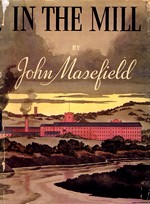
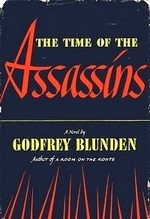 I first read Godfrey Blunden’s
I first read Godfrey Blunden’s 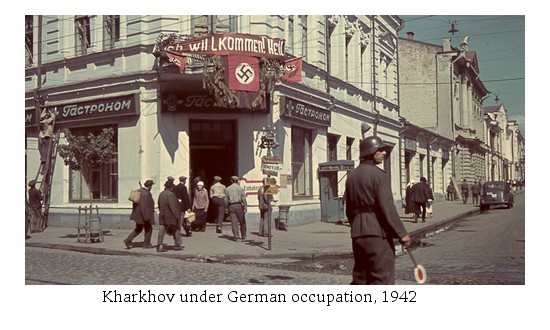
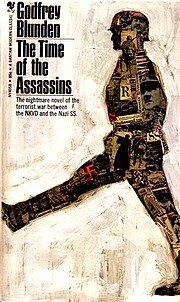 If history is a broom, sweeping back and forth through time, then
If history is a broom, sweeping back and forth through time, then 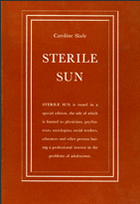 Her first novel,
Her first novel, 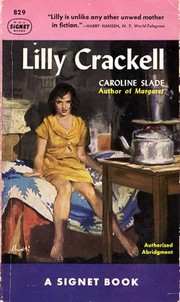 I read
I read 
 The book opens innocently. Benson vouches for the real existence of the count and offers a synopsis of his noble pedigree (quite unconnected with that of the famous painter) as a member of “one of the most distinguiched aristocratic famelys of Europe.” She describes meeting him while he was a patient in a charity hospital in Hong Kong. According to Marlene Baldwin Davis’
The book opens innocently. Benson vouches for the real existence of the count and offers a synopsis of his noble pedigree (quite unconnected with that of the famous painter) as a member of “one of the most distinguiched aristocratic famelys of Europe.” She describes meeting him while he was a patient in a charity hospital in Hong Kong. According to Marlene Baldwin Davis’